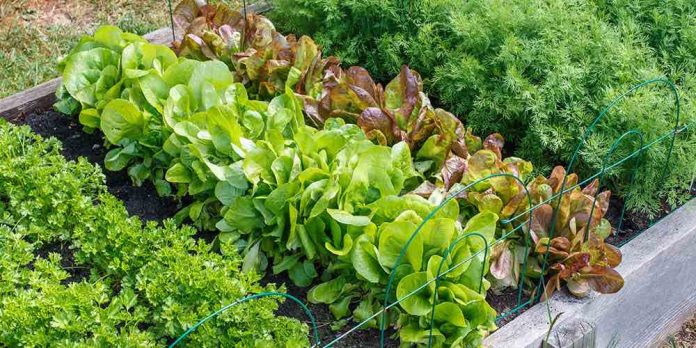Help me create a plan for a vegetable garden.
Creating a vegetable garden is a rewarding and practical way to enjoy fresh produce, save money, and connect with nature. Whether you’re an experienced gardener or a beginner, a well-thought-out plan is essential for a successful vegetable garden. This article will guide you through the key steps to create a thriving vegetable garden, from planning and soil preparation to planting and maintenance.
Table of Contents
TogglePlanning Your Vegetable Garden
Assessing Your Space
- Determine Your Garden Location: Choose a location with plenty of sunlight, ideally 6-8 hours per day. Consider accessibility for watering and harvesting.
- Evaluate Soil Quality: Check the soil for drainage and nutrient content. Good soil is essential for healthy plant growth. If the soil is poor, you might need to amend it or use raised beds.
Choosing the Right Vegetables
- Select Vegetables Based on Climate: Choose vegetables that thrive in your local climate and growing season. Consult a planting calendar for your region to determine the best planting times.
- Consider Your Preferences: Grow vegetables that you and your family enjoy eating. This will make the gardening experience more enjoyable and rewarding.
- Plan for Variety: Include a mix of vegetables to ensure a diverse harvest. Consider incorporating leafy greens, root vegetables, and fruits like tomatoes and peppers.
Designing Your Garden Layout
Deciding on the Garden Type
- In-Ground Gardens: Traditional garden beds planted directly into the soil. Ideal for larger spaces with good soil quality.
- Raised Beds: Elevated garden beds filled with enriched soil. Great for poor soil conditions and easier access for maintenance.
- Container Gardens: Vegetables grown in pots or containers. Perfect for small spaces or urban environments.
Creating a Planting Plan
- Map Out Your Garden: Draw a plan of your garden space, including dimensions and plant locations. This helps in organizing space and ensuring proper plant spacing.
- Consider Plant Spacing: Ensure adequate space between plants for air circulation and growth. Refer to seed packets or plant tags for specific spacing recommendations.
- Implement Companion Planting: Use companion planting techniques to enhance plant growth and reduce pests. For example, planting basil near tomatoes can improve flavor and deter pests.
Soil Preparation and Fertilization
Preparing the Soil
- Clear the Area: Remove any weeds, rocks, or debris from the garden area. This helps prevent competition for nutrients and provides a clean slate for planting.
- Test and Amend the Soil: Conduct a soil test to determine pH levels and nutrient content. Amend the soil with compost, organic matter, or other soil conditioners as needed.
- Tillage and Mixing: Loosen the soil using a garden fork or tiller to improve aeration and drainage. Mix in any amendments evenly.
Fertilizing Your Garden
- Choose the Right Fertilizer: Select a balanced fertilizer that provides essential nutrients. Organic options like compost, manure, or fish emulsion can improve soil fertility.
- Apply Fertilizer Properly: Follow the recommended application rates and methods for your chosen fertilizer. Over-fertilizing can harm plants and lead to nutrient imbalances.
Planting Your Vegetables
Timing and Techniques
- Planting Dates: Follow the recommended planting dates for your chosen vegetables. Some plants need to be started indoors or in a greenhouse before transplanting outdoors.
- Seed Sowing: Sow seeds according to depth and spacing instructions on the seed packet. Cover seeds lightly with soil and water gently.
- Transplanting Seedlings: Harden off seedlings by gradually exposing them to outdoor conditions before transplanting. Space plants according to their specific requirements.
Watering and Mulching
- Watering Requirements: Provide consistent moisture to your plants. Water at the base of the plants to avoid wetting the foliage, which can lead to disease.
- Mulching: Apply mulch around plants to retain soil moisture, suppress weeds, and regulate soil temperature. Organic mulches like straw or wood chips are effective.
Maintaining Your Vegetable Garden
Regular Care and Monitoring
- Weeding: Regularly remove weeds to reduce competition for nutrients and water. Use mulch to help suppress weed growth.
- Pest and Disease Control: Monitor plants for signs of pests or diseases. Use organic methods such as neem oil, insecticidal soap, or hand-picking to manage issues.
- Pruning and Support: Prune plants as needed to encourage healthy growth and remove any damaged or diseased parts. Provide support for tall or climbing plants like tomatoes or cucumbers.
Harvesting and Storage
- Harvest Timing: Harvest vegetables at their peak ripeness for the best flavor and nutrition. Refer to specific guidelines for each vegetable type.
- Storage Methods: Store harvested vegetables properly to extend their shelf life. Some vegetables may need refrigeration, while others can be stored in a cool, dry place.
Planning for Next Season
Evaluating Your Garden
- Reflect on the Season: Review what worked well and what could be improved. Take notes on plant performance, pest issues, and overall garden layout.
- Plan for Improvements: Based on your evaluation, make adjustments for the next gardening season. This might include changing plant varieties, improving soil quality, or modifying garden layout.
Preparing for Winter
- Winterizing Your Garden: Prepare your garden for winter by cleaning up debris, adding compost, and protecting plants with mulch or covers if needed.
- Planning for Spring: Start planning for the next planting season, including selecting new seeds, designing the layout, and preparing soil.
Creating a successful vegetable garden involves careful planning, preparation, and ongoing maintenance. By assessing your space, choosing the right vegetables, designing a thoughtful layout, and providing consistent care, you can grow a bountiful and productive garden. Embrace the process and enjoy the rewards of fresh, home-grown vegetables while connecting with nature and enhancing your gardening skills. Happy gardening!








